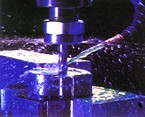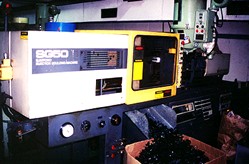


Once a radio design shape has been selected. We use our computer to render an electronic drawing of the radio's shell casing. At this time we correct any design flows or defects that were not apparent in the sample model radio. From the computer images we develop plastic injection molds which will be used in mass production of the radio's parts. Plastic resins are mixed together and then our molding machines begin producing the radio's parts.
MOLD CONSTRUCTION
The
first step in mold making consists of plug construction and/or preparation. The plug may be constructed of nearly
anything, as long as its surface can be finished well enough to give a suitable
mold surface. As stated previously, the plug can
either be an existing item or something fabricated specifically for the mold-making
process. Some of the materials commonly used in plug construction include wood,
plaster, metal and polyurethane foam.
The latter comes either as pre-formed sheets or as a two-part “mix
and pour” system that chemically reacts to form the foam.
The “mix and pour” foam will conform to the shape of any cavity
into which the ingredients are poured.
The
surface of the plug must be finished at least as well as the desired surface
on the part to be produced. In most applications, the preferred plug surface
would be a perfectly smooth and polished class “A” finish. If a particular texture or pattern is desired on the finished
part, it can be incorporated into the plug surface. A high quality, sandable surfacing primer such as the Duratec
Grey Surfacing Primer (#1041-B), works well as the finish coat on the plug.
Incorporate flanges and any necessary parting dams onto the plug at this
point (see “Special Mold Construction Considerations.) 
Home | Products | Company | Services | Contact | Manufacturing | Wholesale | Retail | Trading Partners